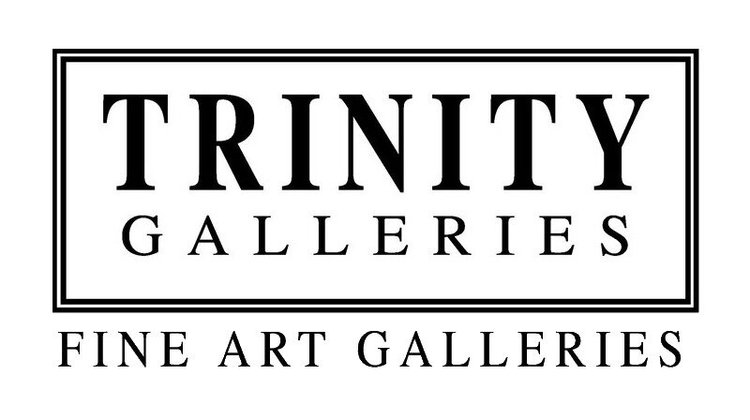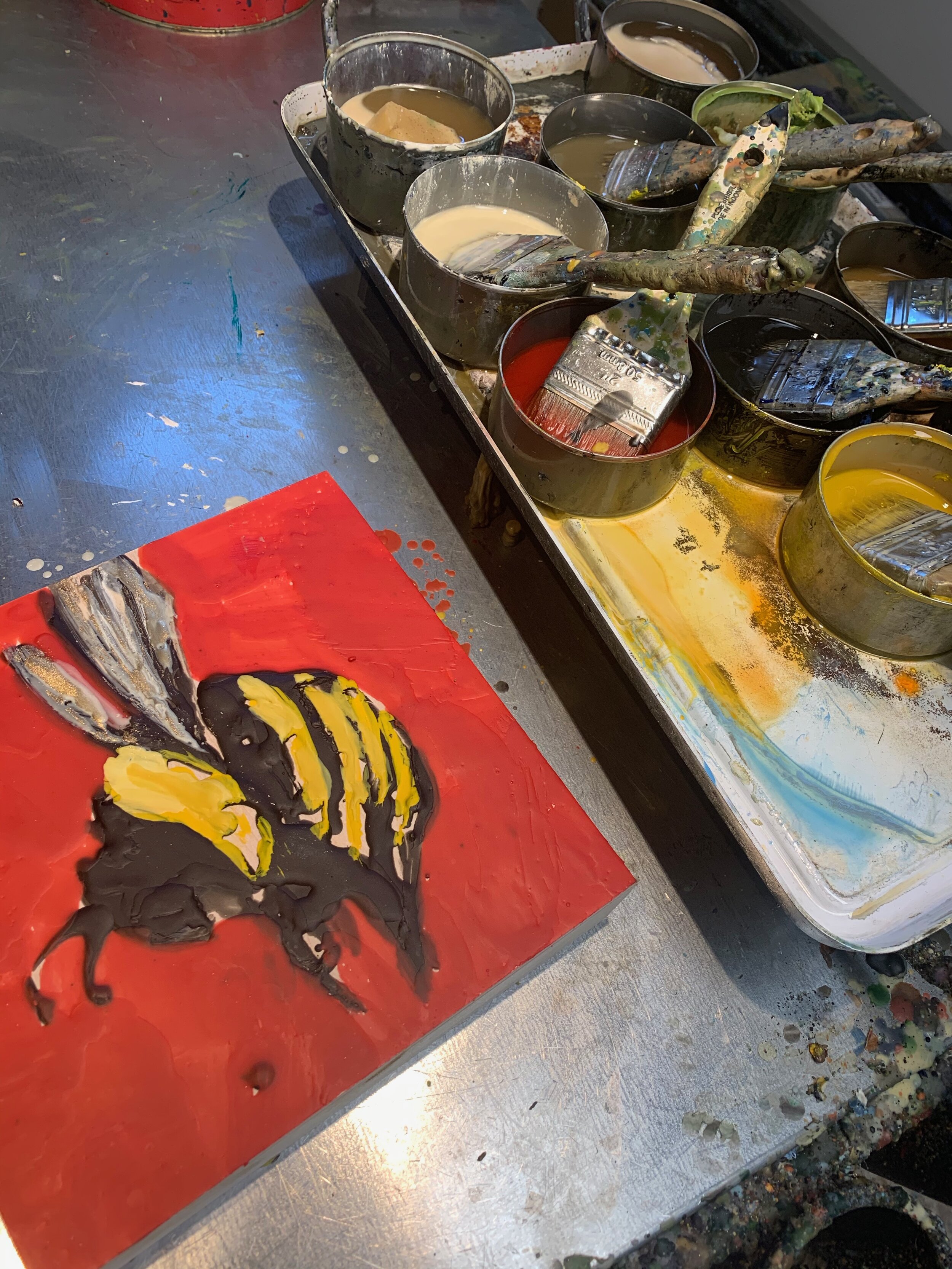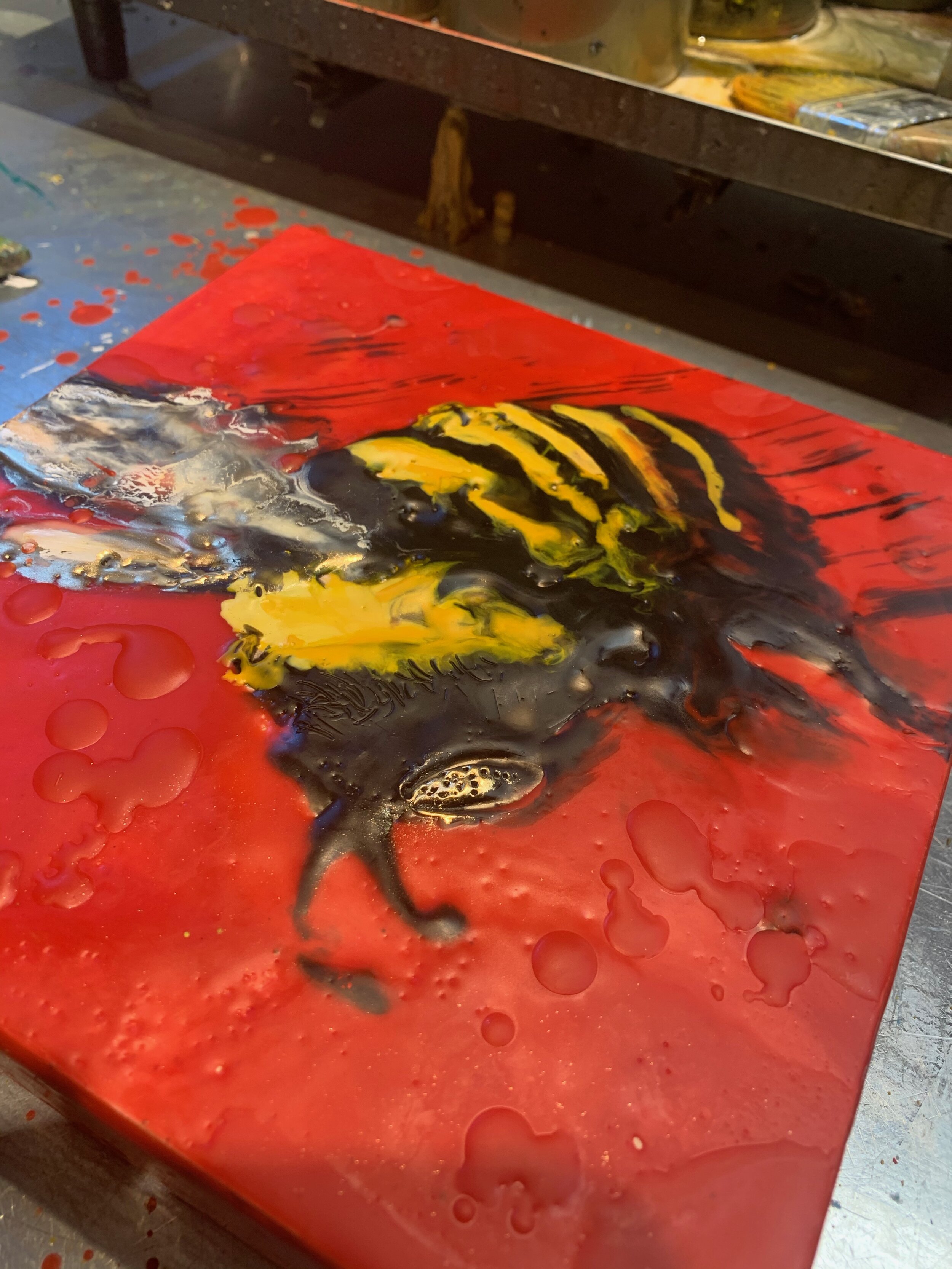First Layers Before Fusing
Texture Closeup
ABOUT ENCAUSTIC
by Kathy Bradshaw
Encaustic is the oldest painting medium dating back to 1000 B.C. to ancient Greece. Undergoing current revival, today’s encaustic is commonly comprised of molten beeswax, dammar resin (to make it more resilient and shinier) and pigments. It is applied to wood, paper, and metal surfaces with brush and palette knives. To ensure a permanent bond, all layers are fused together with a heat source such as a heat gun or blow torch. An encaustic painting’s durable enamel-like surface quickly dries and is impervious to moisture, mildew, dust, shrinkage, darkening, fading, yellowing and cracking unless the artwork is exposed to freezing temperatures or support is not rigid enough.
Encaustic paintings are very durable when cared for properly. If a painting is placed in a warm room in your home, it will not melt. The smell of beeswax will simply be elevated. While encaustic cures in the first year or if it’s exposed to cold, the wax may develop a white cloudy film called bloom. This is normal and can be reversed and the original luster can be regained by simply buffing the surface with a soft cotton or a microfiber cloth in a random circular motion. As time goes by, and the wax cures and hardens, buffing may not be necessary as the painting will keep its polished look. If it must be transported in either hot or cold weather, cover the entire surface with wax paper and unwrap the painting. Encaustic paintings do not need to be varnished or protected by glass. An occasional dusting or light polishing will preserve its soft and satiny sheen.
See more of this beautiful encaustic work on Kathy’s Trinity Galleries product page .


